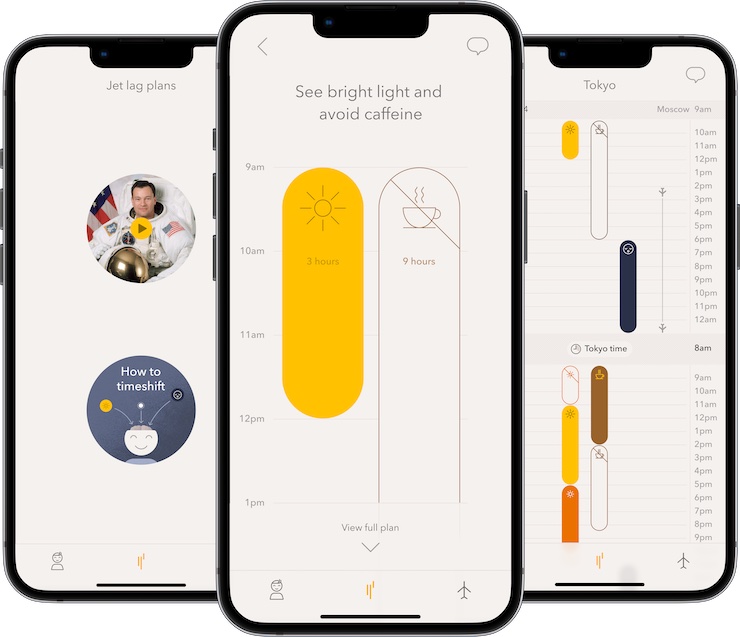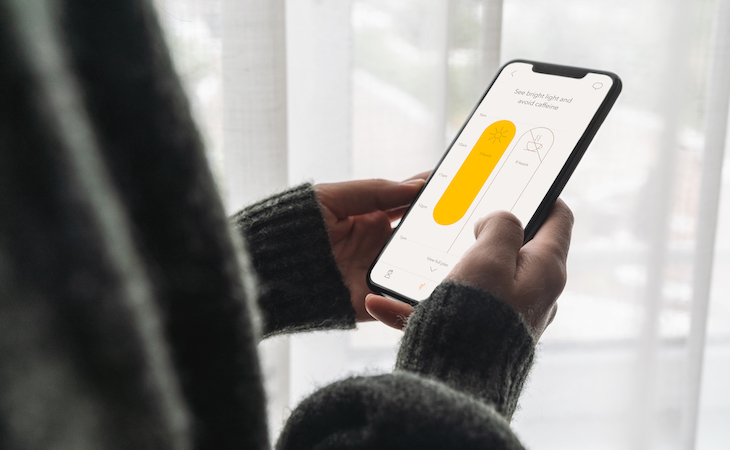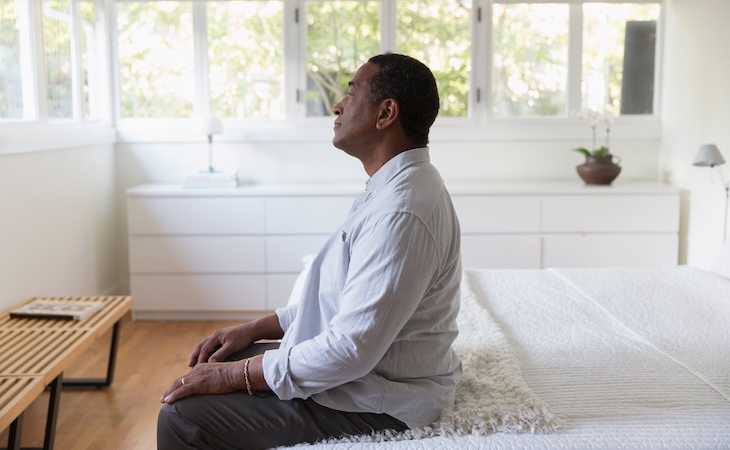“I never know what country you’re in!” Over the past several years, I’ve had at least three friends a month mention a statement to me that’s pretty much along those lines—and honestly, it’s not entirely unwarranted.
I travel a lot: Mostly for work, but many times, I also go see family in other countries. At any given point, I could be in Asia, Europe, or the Americas. You just never know.
That being said, the constant traveling across multiple continents means I also go through multiple time zones—and I’m not the best at managing jet lag at all.
It takes me several days to get used to the new time zone I’m in, and in the case of a very quick work trip, I only truly adjust by the time I’m ready to leave. That means I then have to readjust all over again when I get home.
I know I’m not alone in this. According to Shantha Gowda, PsyD, sleep expert and founder of ThinkSleep, jet lag is a perfectly normal thing—and most people experience it no matter how often they travel.
“While some people are more resilient than others, if you’re traveling long distances across multiple time zones, you’ll likely experience some sort of jet lag,” she says.
Gowda explains that jet lag is a circadian rhythm sleep-wake disorder that commonly occurs when people quickly travel across multiple time zones.
“It happens because of the misalignment of an individual’s internal biological clock with the local time at their destination,” she says. So, you’re in one time zone, but your internal clock thinks you’re somewhere else.
While on my most recent trips, I tried my best to stay awake until the right time and drink coffee to wake up when I needed to—but I found that the constant traveling was really messing with me and I was tired more often than not.
Then, on a recent trip to LA with my sister—who flew for 23 hours to get there from India—I discovered an app that promised to change it all.
She had just used the Timeshifter app, available on both Apple and Android, to help her fight her jet lag. She was wide awake and ready to take on the day…even when it was 2 am her time! I knew I just had to try it. Below is my honest review.
What is the Timeshifter app?
Invented by Mickey Beyer-Clausen, the Timeshifter app is designed for frequent travelers to minimize jet lag symptoms. It uses light exposure and avoidance to essentially “fool” your biological clock, allowing you to adjust more easily to new time zones.
The science used in the app is based on research from Harvard Medical School, which found that exposure to sunlight is the best way to help your clock adjust. Astronauts who systematically sought out bright light and then avoided it during specific intervals could effectively “reset” their circadian clocks.
However, this adjustment isn’t just as simple as stepping into bright sunlight whenever you feel tired—there’s a method to the madness. If you step into bright sunlight when it’s midnight for you in New York, but it’s 6 am in London where you’ve just landed, your body might be fooled into thinking the time has shifted in the other direction.

“If a person experiences light much earlier than their 5 am internal time, then the body interprets this as a late sunset rather than an early sunrise,” the study authors explain. “This will result in shifting the internal biological clock in the wrong (or later) direction.”
The app therefore does all the math for you, telling you exactly when to expose yourself to light and when not to, based on where you’re traveling to, your own internal clock, and sleep chronotype, to help you arrive at your destination more acclimated to the time zone change than you would otherwise.
How does the Timeshifter app work?
Timeshifter works by giving you personalized jet lag plans, which it creates based on where you’re going, your internal circadian rhythm, your chronotype, and other general sleep habits.
To begin, you answer a few simple questions involving your full flight details (including multi-leg flights or any stopovers), your sleep chronotype (are you a wolf, lion, bear, or dolphin), your age and sex, and also some of your own individual sleep patterns.
These questions ask things like your preferred bedtime and wake-up times, as well as any other aids you take to fall or stay asleep, like melatonin or coffee.
Once you enter all those details, the app pulls up a personalized jet lag plan that provides instructions for each hour you’re traveling so that you don’t land completely exhausted and maladjusted to the new time zone.
The instructions vary and include the time zones for both the place you’re going to and coming from, as well as the date. Overall, you could be asked to do everything from avoiding to exposing yourself to sunlight, caffeine, and melatonin, as well as get told when and when not to sleep.
Sample instructions include “avoid caffeine for six hours,” “expose yourself to light in 45 minutes,” and “take melatonin.”
You can even sign up for push notifications so you never miss a beat and adjust your view so you can see either the entire day’s worth of instructions or only a few hours at a time—whatever works best for you.
The short-term view also lets you see instructions using graphics and emojis, which brings about a sense of fun to the app. You can start the app up to three days in advance of your flight if you really want to get ahead of your jet lag, but if you wait until the minute before take-off, that’s an option too.
Obviously, the plan changes depending on how much lead time you give the app—and you’re more likely to adjust to the new time zone the further in advance you start preparing. However, either way, the app promises a much easier adjustment to your new time zone than if you weren’t to use it at all.
Does the Timeshifter app really work?
According to Gowda, apps that help you sync your circadian rhythm can absolutely work because they use your own personal data to create a highly specific plan to follow.
“It’s important to strategically shift someone’s circadian system by what we call phase advancing or phase delaying,” she explains. “These strategies take some understanding of the science and some planning, but apps such as Timeshifter are great resources to help with this process.”
Gowda says the app takes away some of the detailed work you would have to do to map out all of the different activities and clocks (internal body clock, time at each destination and layovers, sunrise/sunset, etc.). The advice is helpful and personalized to you.
However, Gowda cautions that it may not work for everyone.
“If you struggle with sleep problems at baseline, there may be more nuanced approaches to consider, and a sleep specialist would be your best resource,” she explains. “For example, if you typically have a very irregular sleep schedule or struggle with insomnia or other circadian rhythm sleep-wake disorders such as delayed sleep phase, this app may not provide enough detail to help you.”
From firsthand experience, I can say the app absolutely works for me. I often fly from New York to Mumbai, India, and it involves a few hours in London as my layover. This is a 23-hour door-to-door journey, and the time difference is between 9.5 to 10.5 hours, depending on Daylight Saving Time.
When it’s 9 pm in New York, it’s either 6:30 am or 7:30 am in Mumbai, which means that when I get there, I usually want to fall asleep in the middle of the afternoon. Even if I do manage to stay up and go to bed at say, 10 pm, I wake up multiple times in the middle of the night and am traipsing around a dark room at 4 am. This lasts days.
When my sister introduced the Timeshifter app to me, I knew I needed to try it. And it turns out, my weird strategy of trying to sleep on the first flight and stay awake on the second was the wrong approach. This actually made my body think it was morning when I landed at night in India and explains why I kept waking up at all hours.
From firsthand experience, I can say the app absolutely works for me.
Instead, the app directed me to expose myself to sunlight during the first flight itself and only sleep for a few hours on it. After this, I should immediately take some melatonin, avoid bright light all through my layover, and sleep for a maximum of an hour or two at the beginning of my second flight.
This helped my body adjust to the timezone a lot easier, and I landed pretty tired because I hadn’t slept the entire flight like I had in the past. I didn’t toss or turn that night at all and comfortably woke up well-rested at 6 am in the morning.
I wouldn’t have known to tailor my sleep schedule like this at all if it hadn’t been for the Timeshifter app, and I’ve used it multiple times since then. While I’m not always 100% adjusted when I land, I’m definitely more in sync with the new time zone than I would’ve been otherwise.
Is the Timeshifter app free?
While your first plan is free, Timeshifter does involve a fee after that. Each jet lag plan costs $9.99 (this includes a one-way or roundtrip with up to two short stopovers)—or you can buy an unlimited plan, one-year subscription for $24.99 if you travel often.
FAQs
Is there an app to help with jet lag?
There are two popular apps that promise to help with jet lag. The first is Timeshifter, which uses light exposure and avoidance to trick your circadian rhythm and readjust your biological clock so that you adjust to your destination’s time zone faster. The second is Uplift, which utilizes biorhythmic acupressure to adjust to time zones: Once you input your flight details and land in your new time zone, it gives you a video demonstrating a five-minute acupressure exercise to help you adjust.
Is the Timeshifter app legit?
Timeshifter is absolutely legit. The app has a 4.7-star rating on the app store, with multiple positive reviews from athletes, astronauts, and high-powered CEOs on its website.
How can I get rid of my jet lag?
The best way to avoid jet lag is to take precautions before you get to the new time zone, not after, according to Gowda. “With the help of a sleep specialist, it is possible to create a plan tailored to your sleep schedule, specific chronotype, core body temperature, travel schedule, light exposure, and meal timing,” she says. “Strategies to manage jet lag typically include gradually advancing or delaying bedtime and other routine activities (sunlight exposure, meal timing, workouts, etc.) in the few days leading up to travel depending on which way you’re traveling.”
How long does jet lag usually last?
“It really depends on person to person—some people are simply more resilient to jet lag than others,” says Gowda. “On average, it takes about one day for the body to adjust for each time zone crossed, but this can vary.”
For tips on snoozing more soundly during your travel journey, check out our guide on how to sleep better while traveling.
Images courtesy of Timeshifter




